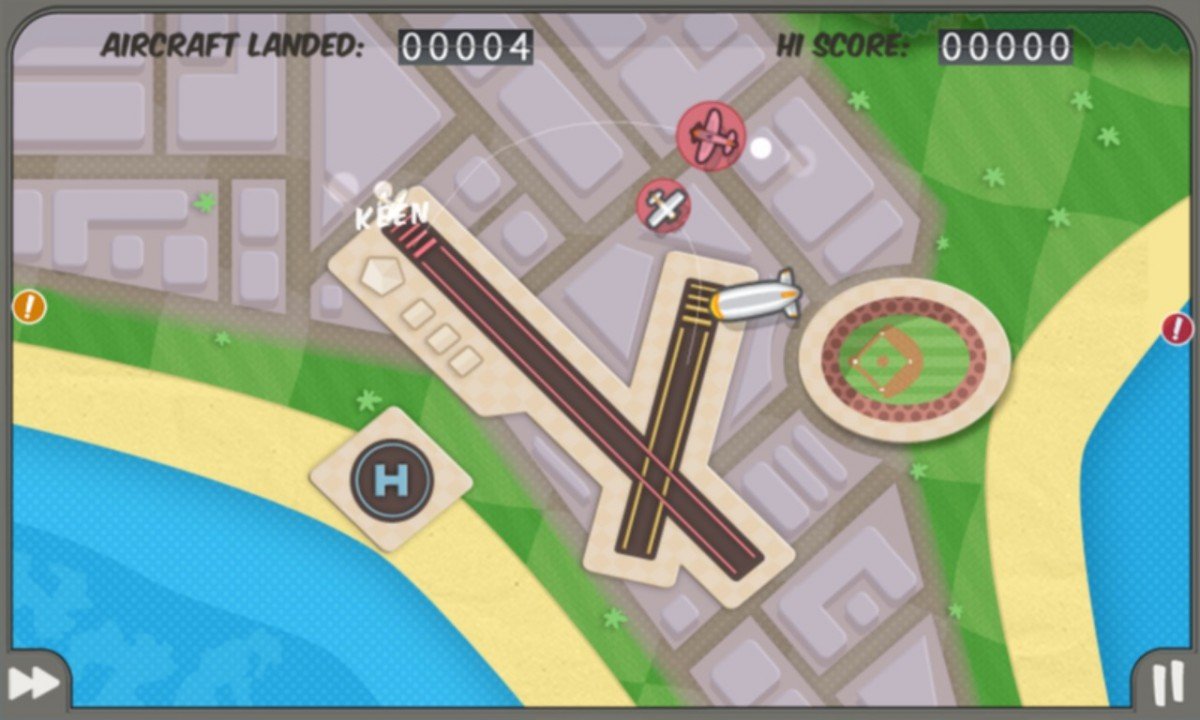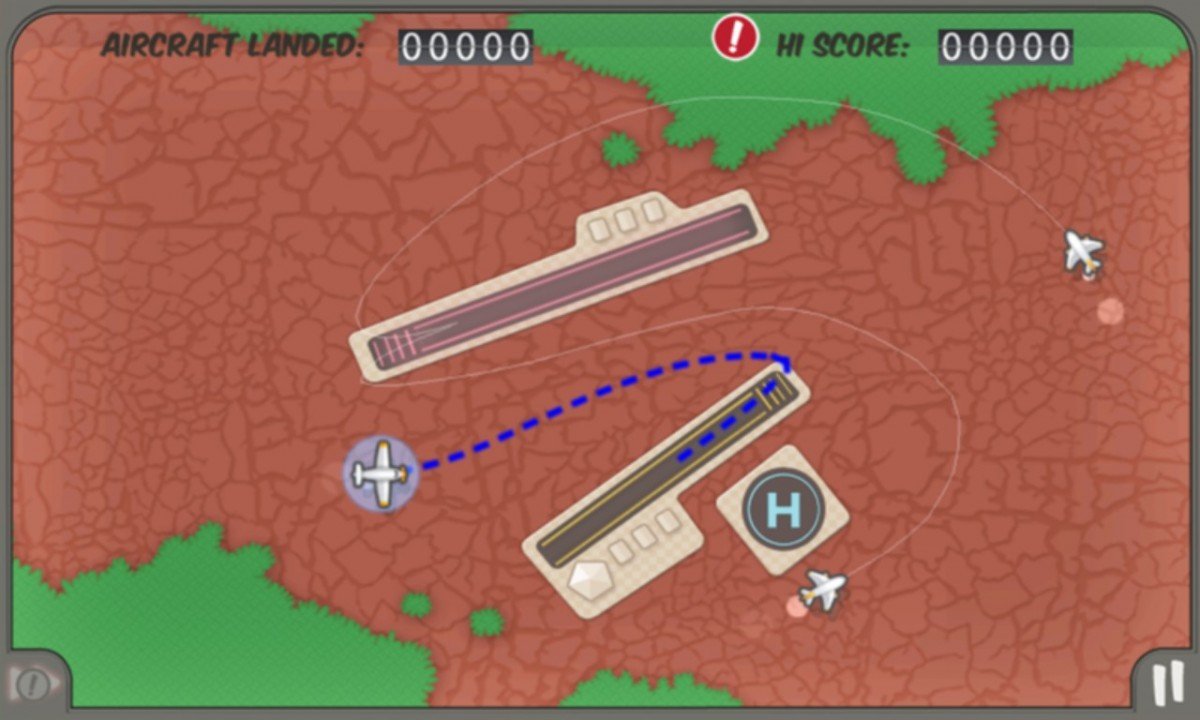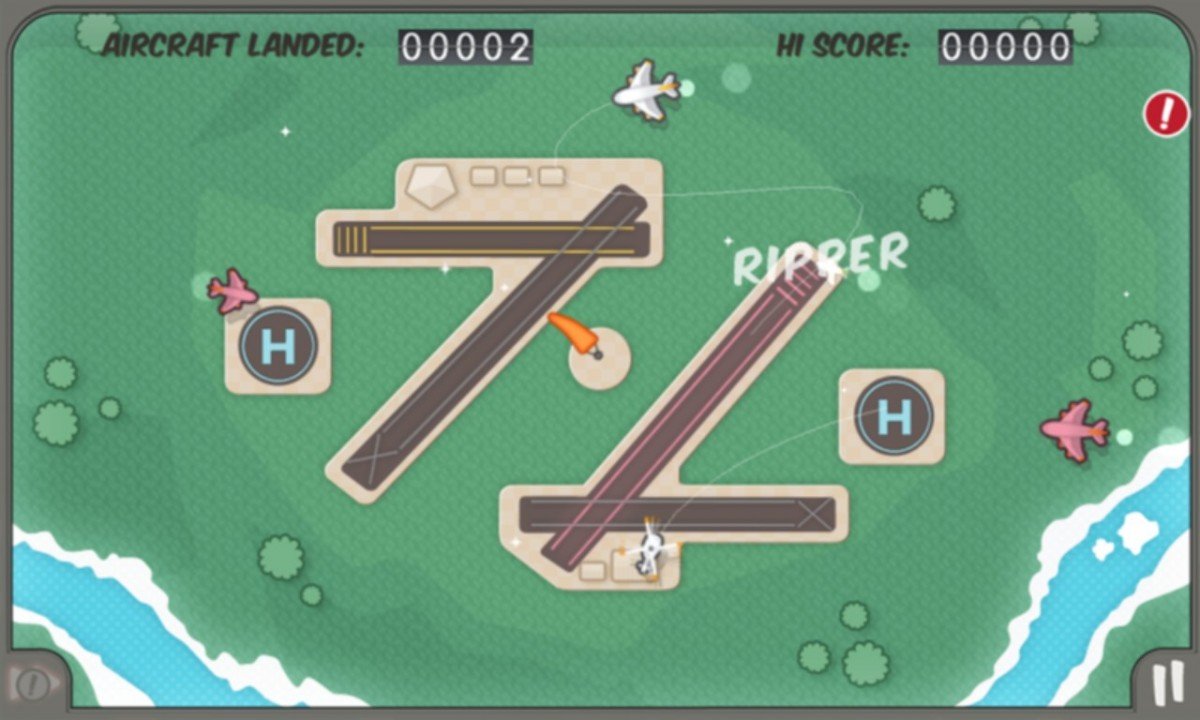Flight Control Review: The seed of proliferation

Let’s face it, all the cool Windows Phone gamer kids are playing Skulls of the Shogun right now, but we can’t review that game until we’ve spent a little more time with it. Instead, we'll take a look at a classic title. Some people felt left out with last week’s Flight Control: Rocket review since that fine game is a Nokia exclusive. As such, it’s high time for our review of the original Flight Control, a game that all Windows Phone 7 and 8 owners can play. Flight Control comes from developer Firemint (now known as Firemonkeys) and Namco Bandai games.
A new genre takes off
Flight Control is (to my knowledge) the very first line-drawing game. While the genre hasn’t taken off to the same extent as Angry Birds-style physics games, it is perfectly suited to touch screen devices. The game’s appeal comes from its marriage of concepts that everyone, gamers and non-gamer alike understands. We all know how to draw lines (some of us better than others), so that’s a perfect mechanic. And the job of air traffic controller probably doesn’t sound too exciting on its own, but grounded concepts like that often make for mass appeal.
Radio controller
As the air traffic controller, it’s your job to help incoming aircraft land safely. Each map has one or more of three colored landing zones: red and yellow runways, and blue helicopter landing pads. Aircraft of those three colors approach from off-screen and must then be guided to the same colored landing zone. Each landed aircraft add one point to the player’s score. The game continues until a crash occurs, Denzel hopefully managing to save the day.
To direct an aircraft, tap and hold it and then draw a pathway for it to travel. Paths needn’t be straight – it’s often necessary to wind around another plane’s trajectory or loop in circles as you wait for a runway to clear. The actual line drawing engine in this version of Flight Control is slightly rough, as the lines don’t come out as smoothly as in other versions. They may show up a bit more angular than in the sequel, but still look much smoother than those of Harbor Master for Windows Phone.
As the game progresses, aircrafts appear in greater numbers, increasing the difficulty. Planes come in different sizes and speeds, while helicopters always fly slowly. Much of the challenge in this version comes from the actual color distribution of the planes. Red planes almost always come in greater numbers than yellow, so the player often struggles to keep a horde of reds from crashing into each other while the yellow runway goes unused. I would prefer a more even distribution, but it doesn’t hurt the game too badly.
Speed control
Flight Control is a much slower-paced game than its sequel. The beginning of the game can be somewhat boring as only a few planes slowly inch across the screen. Once the crafts start coming in higher numbers, their speed becomes less annoying and perhaps even appreciable.
That said, players can increase the speed of the game at any time using the Fast-Forward button at the bottom corner of the screen. Tapping it once causes the game to speed up temporarily before reverting to the standard crawl. Double-tap to lock in the higher speed, making the game faster but also tougher. A slightly lower fast-forward speed (or slightly higher standard speed) would’ve been nice, as the game cries out for a happy medium. Harbor Master beats Flight Control there with its customizable fast-forward setting.
All the latest news, reviews, and guides for Windows and Xbox diehards.
The Windows Phone version of Flight Control may let players fast-forward at will, but it lacks an important feature of the iOS game: rewinding. On iOS, players can rewind after an accident in order to continue chasing after higher scores. You only get a certain number of rewinds, so it’s not a god mode. To be fair though, the Steam version, while still superior to Windows Phone in many ways, also lacks the rewind function.
A few fields short
This version of Flight Control’s weakest aspect is probably the small number of airfields – maps to play on. It only offers six maps compared to the iOS and Steam version’s nine, so we’re talking 33 percent less content. Even Harbor Master has seven maps. So yeah, the gameplay in this one stretches a little thin by comparison.
Still, the airfields on offer represent a decent amount of variety. One map includes AI-controlled emergency planes whose trajectories can’t be changed by the player. You have to work around those bullish planes whenever they appear. It’s an interesting dynamic that doesn’t show up in FC Rocket.
One map has two sets of red and yellow runways and strong winds. Whenever the wind pattern changes, one set of runways becomes unavailable for new planes to land on. Finally, the airfield with a baseball stadium throws blimps into the mix. These airships slowly float from one side of the screen to the other rather than landing on a runway, and must simply be avoided.
Turbulence
Aside from missing maps, this Flight Control has a few other problems – mostly stemming from its age. FC Rocket fixes all of these concerns.
- Menus: The airfield selection interface is super clunky.
- Stat tracking: Considering the only real meta-goal is to land 10,000 aircraft, it’s frustrating that you can’t view your total planes landed. Instead, players have to clumsily switch between airfields, view their stats, and then add their scores together by hand.
- Slow leaderboards: Players have to manually upload their scores instead of automatic uploads like pretty much every other Windows Phone game. Also, the leaderboards are slower to load than any other game I can think of.
- No fast app switching: An update to add Fast App Switching and the missing airfields would’ve been perfect. It never happened, possibly due to Xbox Windows Phone’s Draconian certification policies.
Achievements
Harbor Master zooms ahead of Flight Control as far as content goes, but I strongly favor Flight Control’s easier Achievement list. A few fun style-based Achievements: creating three separate collisions at once, keeping a single plane on-screen for five minutes, landing no planes for two minutes, and keeping 15 planes on-screen at once. All of those require specific strategies from the player, but nothing too tough.
The most elusive Achievement in this game is the amusingly named ‘Over Nine Thousand!,’ awarded for landing ten thousand planes. Because of Flight Control’s slow pace, it takes quite a while to get – 10 hours at minimum. It’s not truly difficult, but the small number of maps and lack of other long-term goals makes those ten hours feel like forever.
Overall Impression
While Flight Control invented the line-drawing genre, it has since been surpassed by Harbor Master and especially Flight Control Rocket in the quality department. This version has only two goals to keep players going: chasing high scores, and grinding towards the 10,000 planes Achievement. The latter is certainly doable, but unquestionably boring.
If you have a Nokia phone, I’d say you can safely skip this first game in favor of Flight Control Rocket. But the original is a classic and still worth playing, especially for Achievement hunters. It’s just too bad that Firemint and Namco Bandai didn’t see fit to update this port to keep pace with other versions.
Flight Control costs $2.99 and works great on both Windows Phone 7 and 8 devices. Get it here at the Windows Phone Store.

Paul Acevedo was formerly a Games Editor at Windows Central. A lifelong gamer, he has written about videogames for over 15 years and reviewed over 350 games for our site. Follow him on Twitter @PaulRAcevedo. Don’t hate. Appreciate!







